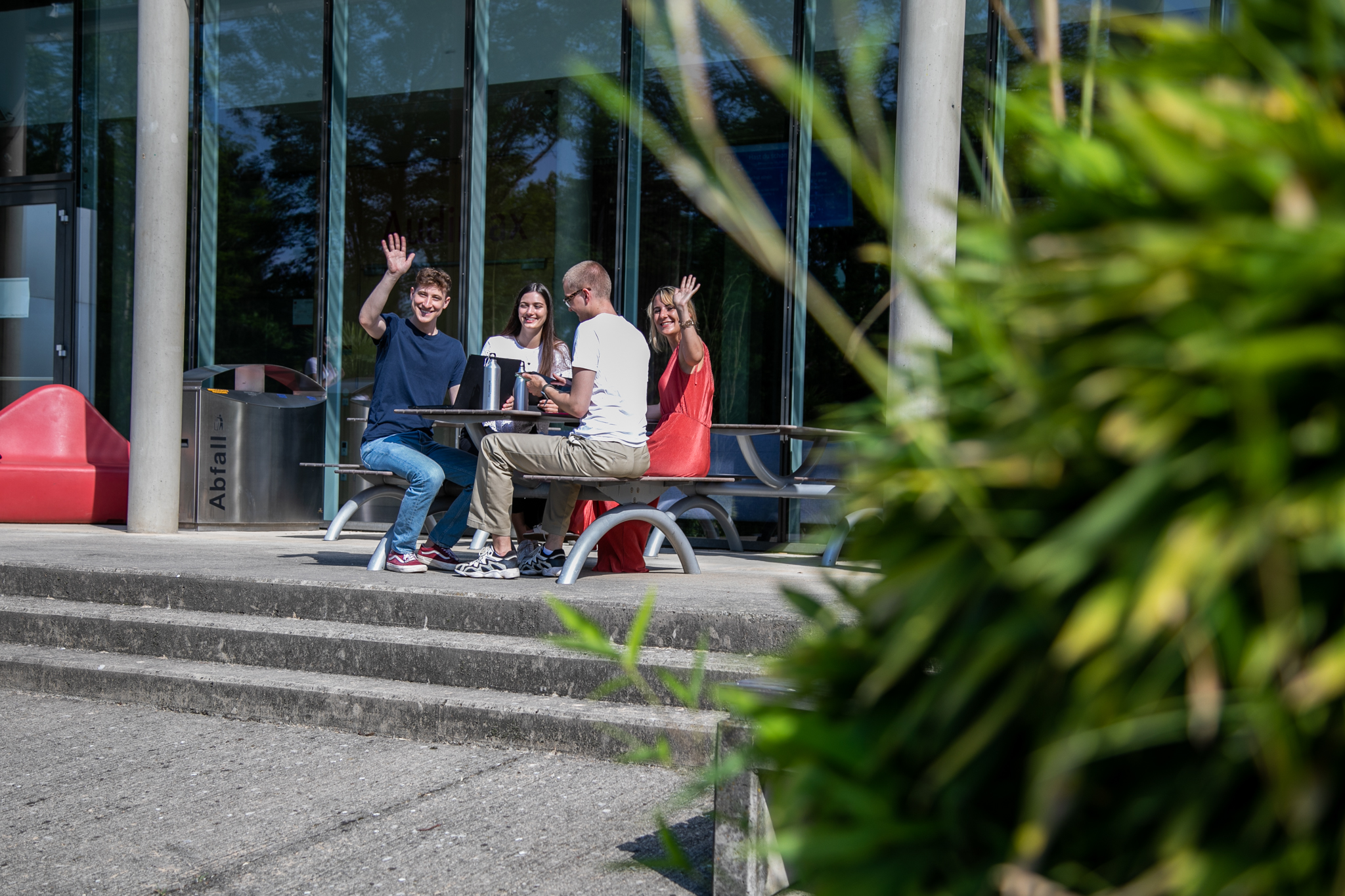From building design to recycling buildings: the Institute of Construction Design and Economics is conducting research into various aspects of the building industry. Spotlight on three key areas.
Conceptual design and construction
Eva-Maria Kienzl
The Institute of Construction Design and Economics is investigating innovative facade systems, modern timber construction and strong thin glass. (© FH JOANNEUM / Peter Kovacs)
Thin glass with a heavy responsibility
Glass sheets which are maximum two millimetres thick are referred to as thin glass. For comparison, this is about the same thickness as a cotton blouse. Thin glass is usually made of soda-lime or aluminium silicate glass. It displays totally new characteristics including extreme flexibility compared with traditional building materials and consequently opens up a number of new possibilities for applications in construction elements, such as pillars, supports or special types of facade systems.
Topics such as the strength of glass, composite action or joining technology are studied at the Josef Ressel Centre for Thin Glass Technology at FH JOANNEUM to develop innovative design principles for different applications in building construction.

© FH JOANNEUM

Screws in timber construction
It is a familiar situation: when assembling furniture or doing DIY in the garden, two wooden boards have to be joined together. The solution is obvious: use a screw. But there are many different types of screw. That is why the Institute of Construction Design and Economics attaches great importance to these little fastenings. Screw connections in timber construction and the requirements of these construction systems are being investigated to deliver innovative solutions.
Timber construction itself is gaining in importance. The reason for this is that the trend towards sustainability and careful use of resources has also gained a foothold in the construction sector. This is also having an impact on civil engineers. FH JOANNEUM is providing scientific support for a training seminar, in which university staff are transferring their expertise to the construction industry.


Facade systems in the building lifecycle
The choice of facade has a particular impact in the process of designing a building. However facades are not merely critical for the appearance of a building; they also affect technical, economic and environmental aspects of the structure: how facades behave throughout their lifecycle was investigated in a FH JOANNEUM project in cooperation with the Construction Division of the Austrian Economic Chamber. Buildings belonging to different housing cooperatives were examined and the data acquired was analysed. The results indicate how standard facades on residential buildings change over time and when and what action is required in terms of cleaning and maintenance.
The focus in building is often merely on the actual construction process. Yet, on closer inspection of the complete lifecycle, it is important to consider the subsequent phases of a building’s life – from the design and planning phase through construction and use to demolition and recycling. The lifecycle aspects considered in the facade systems project are also taken into account in other projects conducted at the Institute of Construction Design and Economics.










